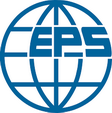Solution combustion synthesized NiFe2O4 / reduced graphene oxide composite nanomaterials: morphology and electrical conductivity
DOI:
https://doi.org/10.15330/pcss.23.4.815-824Keywords:
Nickel ferrite, graphene oxide, composite, Mossbauer spectroscopy, electrical conductivityAbstract
Ultrafine NiFe2O4 (T0) and NiFe2O4 / rGO composites have been synthesized by solution combustion method. The presence of rGO in the composite (33 wt.% (T1) or 66 wt.% (T2)) causes a decrease in the average particle size of the oxide phase from 16 to 10-11 nm with their transition to superparamagnetic with a decrease in the mixed spinel inversion degree. The SBET values for T1 and T2 are 180 and 315 m2/g, respectively, decreasing to 78 and 169 m2/g after annealing in the temperature range of 200-800°C. Both micro- and small mesopores (size of 2.0-4.5 nm) have been observed for samples T2, while samples T0 and T1 are mainly mesopores. The small polaron mechanism of electrical conductivity is observed for pure spinel, when the electron hopping charge transport prevails for NiFe2O4 / rGO composites. It can be assumed that the GO component lowers the combustion reaction temperature and prevents particle agglomeration.
References
E. Carlos, R. Martins, E. Fortunato, R. Branquinho, Frontispiece: Solution Combustion Synthesis: Towards a Sustainable Approach for Metal Oxides, Chemistry – A European Journal, 26, 9099(2020); https://doi.org/10.1002/chem.202084264
A. Varma, A. S. Mukasyan, A. S. Rogachev, K. V. Manukyan, Solution combustion synthesis of nanoscale materials, Chem. Rev., 116, 14493 (2016); https://doi.org/10.1021/acs.chemrev.6b00279.
A. Sutka, G. Mezinskis, Sol-gel auto-combustion synthesis of spinel-type ferrite nanomaterials, Frontiers of Materials Science, 128, 6 (2012); https://doi.org/10.1007/s11706-012-0167-3.
V. Boychuk, V. Kotsyubynsky, Kh. Bandura, I. Yaremiy, R. Zapukhlyak, S. Fedorchenko, Self-combustion synthesized NiFe2O4 / reduced graphene oxide composite nanomaterials: Effect of chelating agent type on the crystal struc¬ture and magnetic properties, Mater. Today: Proc., 35, 542 (2021); https://doi.org/10.1016/j.matpr.2019.10.026.
S. B. Narang, K. Pubby, Nickel spinel ferrites: a review”, J. Magn. Magn. Mater., 519, 167 (2021); https://doi.org/10.1016/j.jmmm.2020.167163.
V.M. Boychuk, V.O. Kotsyubunsky, K.V. Bandura, B.I. Rachii, I.P. Yaremiy, S.V. Fedorchenko, Structural and electrical properties of nickel-iron spinel/reduced graphene oxide nanocomposites, Mol. Cryst. Liq. Cryst., 673, 137 (2019); https://doi.org/10.1080/15421406.2019.1578503.
V. O. Kotsyubynsky, V. M. Boychuk, I. M. Budzulyak, B. I. Rachiy, M. A. Hodlevska, A. I. Kachmar, M.A. Hodlevsky, Graphene oxide synthesis using modified Tour method, Adv. Nat. Sci.: Nanosci. Nanotechnol., 12, 035006 (2021); https://doi.org/10.1088/2043-6262/ac204f.
H. Salazar-Tamayo, K. E. García, C. A. Barrero, New method to calculate Mössbauer recoilless f-factors in NiFe2O4 Magnetic, morphological and structural properties, J. Magn. Magn. Mater., 471, 242 (2019); https://doi.org/10.1016/j.jmmm.2018.09.066.
R. S. Yadav, I. Kuřitka, J. Vilcakova, J. Havlica, J. Masilko, L. Kalina, M. Hajdúchová, Structural, magnetic, dielectric, and electrical properties of NiFe2O4 spinel ferrite nanoparticles prepared by honey-mediated sol-gel combustion, J. Phys. Chem. Solids, 107, 150 (2017); https://doi.org/10.1021/acsomega.9b03191 .
R. Tiwari, M. De, H. S. Tewari, & S. K. Ghoshal, Structural and magnetic properties of tailored NiFe2O4 nanostructures synthesized using auto-combustion method, Results Phys., 16, 102916 (2020); https://doi.org/10.1016/j.rinp.2019.102916.
M. Mozaffari, M. E. Arani, & J. Amighian, The effect of cation distribution on magnetization of ZnFe2O4 nanoparticles, J. Magn. Magn. Mater, 322, 3240 (2010); https://doi.org/10.1109/TMAG.2015.2440478.
R. D. Shannon, Revise deffective ionic radii and systematic studies of interatomic distances in halides and chalcogenides, Acta Cryst, 32, 751 (1976); https://doi.org/10.1107/S0567739476001551.
V. Kotsyubynsky, B. Ostafiychuk, V. Moklyak, A. Hrubiak, Synthesis, characterization and electrochemical properties of mesoporous maghemite γ-Fe2O3, In Solid State Phenomena, 230, 120 (2015); https://doi.org/10.4028/www.scientific.net/SSP.230.120.
T. Tatarchuk, N. Danyliuk, A. Shyichuk, V. Kotsyubynsky, I. Lapchuk, V. Mandzyuk, Green synthesis of cobalt ferrite using grape extract: the impact of cation distribution and inversion degree on the catalytic activity in the decomposition of hydrogen peroxide, Emergent Mater., 1 (2021); https://doi.org/10.1007/s42247-021-00323-1.
S. Mitra, K. Mandal, & P. A. Kumar, Temperature dependence of magnetic properties of NiFe2O4 nanoparticles em¬beded in SiO2 matrix, J. Magn. Magn. Mater, 306, 254 (2006); https://doi.org/10.1016/j.jmmm.2006.03.024.
B. V. Prasad, B. R. Babu, M. S. R. Prasad, Structural and dielectric studies of Mg2+ substituted Ni–Zn ferrite, Mater. Sci.-Pol., 33, 806 (2015); https://doi.org/10.1515/msp-2015-0111.
H. Salazar-Tamayo, K. E. G. Tellez, C. A. B. Meneses, Cation Vacancies in NiFe2O4 During Heat Treatments at High Temperatures: Structural, Morphological and Magnetic Characterization, Mat. Res., 22, 0298 (2019); https://doi.org/:10.1590/1980-5373-mr-2019-0298.
M. Thommes, K. Kaneko, A. V. Neimark, J. P. Olivier, F. Rodriguez-Reinoso, J. Rouquerol, K. S. Sing, Physisorption of gases, with special reference to the evaluation of surface area and pore size distribution (IUPAC Technical Report), Pure Appl. Chem., 87, 1051 (2015);https://doi.org/10.1515/pac-2014-1117.
K. S. Sing, R. T. Williams, Physisorption hysteresis loops and the characterization of nanoporous materials, Adsorption Science & Technology, 22, 773 (2004); https://doi.org/10.1260/0263617053499032.
M. Younas, M. Nadeem, M. Atif, R. Grossinger, Metal-semiconductor transition in NiFe2O4 nanoparticles due to reverse cationic distribution by impedance spectroscopy, J. Appl. Phys., 109, 093704 (2011); https://doi.org/10.1063/1.3582142.
Z. Ž. Lazarević, Č. Jovalekić, A. Milutinović, D. Sekulić, V. N. Ivanovski, A.B. Rečnik, Ž. Cekić, N. Romčević, Nanodimensional spinel NiFe2O4 and ZnFe2O4 ferrites prepared by soft mechanochemical synthesis, J. Appl. Phys., 113, 187221 (2013); https://doi.org/10.1063/1.4801962.
A. Bhaumik, J. Narayan, Conversion of p to n-type reduced graphene oxide by laser annealing at room temperature and pressure, Journal of Applied Physics, 121, 125303 (2017); https://doi.org/10.1063/1.4979211.
Joung, D., Khondaker, S. I., “Efros-Shklovskii variable-range hopping in reduced graphene oxide sheets of varying carbon s p 2 fraction ”, Phys. Rev. B, 86(2012), 235423 https://doi.org/10.1103/PhysRevB.86.235423
A. Haque, M. Abdullah-Al Mamun, M. F. N. Taufique, P. Karnati, K. Ghosh, Large magnetoresistance and electrical transport properties in reduced graphene oxide thin film, IEEE Trans. Magn., 54, 1 (2018); https://doi.org/10.1109/TMAG.2018.2873508.
J. C. Dyre, T. B. Schrøder, Universality of ac conduction in disordered solids, Rev. Mod. Phys., 72, 873(2000); https://doi.org/10.1103/RevModPhys.72.873.









